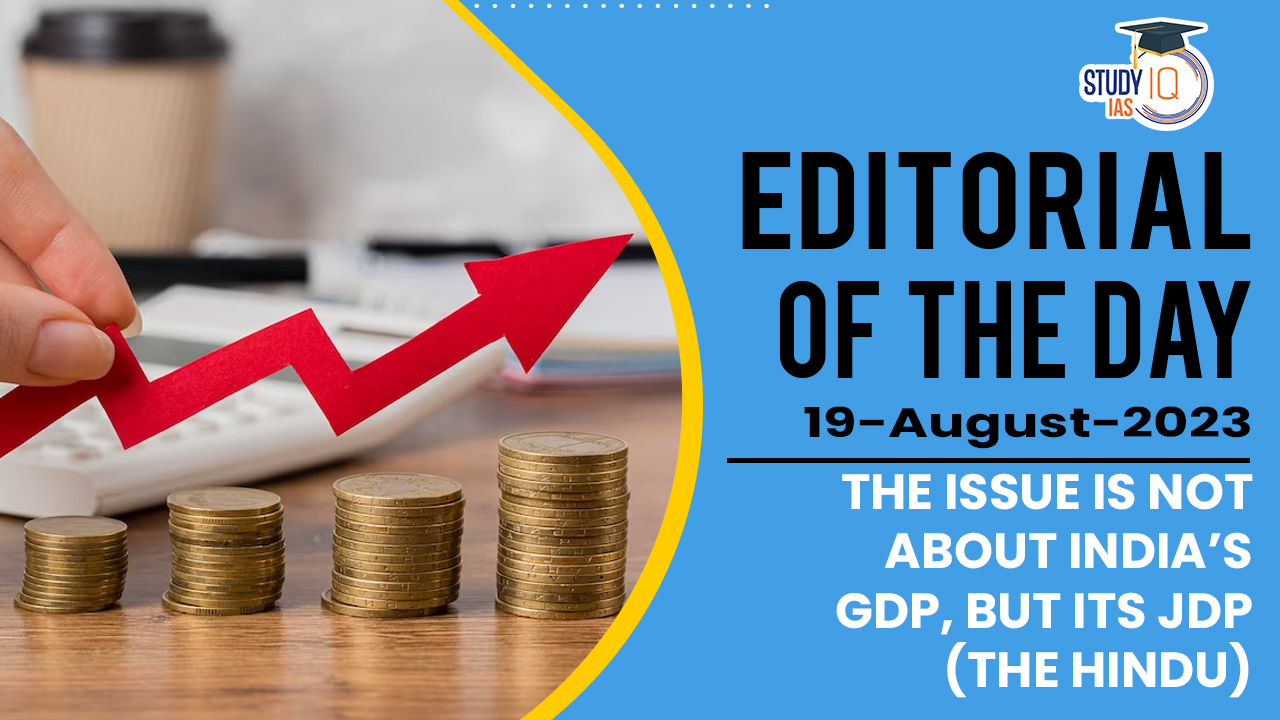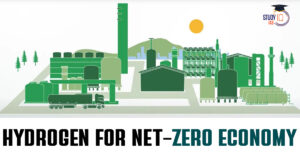Context: The article is discussing a recent debate that took place in the Indian Parliament regarding the motion of no-confidence. During this debate, the Union Finance Minister highlighted India’s positive economic indicators, such as double-digit GDP growth, being the world’s fastest-growing economy, and positive assessments from foreign institutions like the International Monetary Fund (IMF) and Morgan Stanley. However, the former Union Finance Minister countered these claims by stating that the annual GDP growth under the previous government was higher. The central theme of the article is that the debate among India’s economic policymakers has largely focused on comparing GDP growth rates under different governments, without addressing the more fundamental question of whether these headline-grabbing GDP numbers actually lead to true economic prosperity for all citizens. The article calls for political leaders to question the actual impact of GDP growth on the overall well-being of the population and to consider whether economic growth is benefiting everyone in society.
Decoding the Editorial
This article discusses several important dimensions related to India’s economic growth such as job creation, and social implications.
- Dissonance between GDP Growth and Job Creation:
-
- Despite India’s reported high GDP growth rates, there is a disconnect between economic growth and the creation of jobs.
- The demand for minimum wage work under the Mahatma Gandhi National Rural Employment Guarantee Act (MGNREGA) has continued to grow even during periods when India was experiencing rapid GDP growth.
- This suggests that economic growth has not necessarily translated into an increase in quality jobs for a significant portion of the population.
- Job Quality and Social Fissures:
- The jobs being created as a result of GDP growth tend to exacerbate social inequalities.
- Formal service sector jobs, which contribute to GDP growth, are primarily occupied by people from so called higher castes, while a significant portion of workers engaged in MGNREGA programs come from so called socially oppressed castes such as Dalits, tribals, and backward castes.
- This highlights a disparity in the distribution of job opportunities based on social backgrounds.
- Declining Job Intensity of GDP Growth:
- Over the years, the number of formal jobs created per percentage point of GDP growth has been declining.
- The article mentions that in the 1980s, every percentage point of GDP growth led to the creation of two lakh formal jobs, but this declined to just one lakh jobs per percentage point of GDP growth in subsequent decades.
- This decline is attributed to factors such as poor quality of GDP growth, rapid productivity growth, and increased automation in industries.
- Focus on Job Intensity:
- The article emphasizes the need to shift the focus from pursuing headline GDP growth to concentrating on the job intensity of economic initiatives.
- While certain economic activities, such as semiconductor manufacturing, might contribute significantly to GDP figures, they may not generate substantial job opportunities, particularly for low-skilled workers.
- Automation in industries like electronics, automobiles, and semiconductors has reduced their capacity to create jobs compared to earlier periods.
The Mines and Minerals Bill, India’s future:
The article is discussing the potential impact of the new Mines and Minerals (Development and Regulation) Amendment Bill, 2023 (referred to as the MMA Bill) recently introduced by the government.
- Potential Booster Shot: The MMA Bill has the potential to significantly boost India’s economy if it is effectively implemented.
- Transition to Electric Mobility: The global trend is moving toward electric mobility, and minerals like lithium, cobalt, graphite, and rare earths are essential for this transition.
- China’s Dominance: China is aggressively pursuing control over the supply chain of these minerals, sourced from various parts of the world, through a forceful geo-economic strategy.
- Wealth of Minerals: Valuable deposits of minerals, including lithium, have been discovered in the Hindu Kush mountain range. China’s involvement with the Taliban indicates the strategic importance of controlling such assets.
- India’s Mineral Potential: India’s geographic conditions are conducive to discovering mineral deposits similar to those in other regions. However, India has not fully explored its mineral resources, despite having significant potential.
- Deep Sea Mining: India’s long coastline offers the opportunity for deep sea mining to discover strategic minerals. However, challenges like limited access to modern mining technology, environmental concerns, and labour exploitation have hindered exploration efforts.
- Role of the MMA Bill: The new MMA Bill aims to address these challenges by involving the private sector in the exploration of strategic minerals, including lithium.
- Job Creation and Inclusivity: Unlike industries such as semiconductor manufacturing, mining can create a large number of local, low-skilled jobs. It can also be more inclusive by providing employment opportunities to marginalised communities.
- Inclusive Economic Development: The author suggests that by tapping into India’s untapped mining potential, the country has the opportunity to achieve comprehensive economic development and become a significant player globally by controlling critical minerals.
- Need for Caution: While the MMA Bill shows promise, its effectiveness will depend on the details and implementation. The author emphasizes the importance of setting strong regulations to prevent labour exploitation and environmental hazards.
- Resource Allocation: The government should carefully assess where to invest limited resources to maximize social benefits. The author advocates for critical evaluation rather than blindly supporting initiatives like ‘SemiconIndia’ or ‘Make in India’.
Shift in Methods of Measuring Growth:
The article is advocating for a shift in the way economic progress and success are measured, particularly in the context of political leadership and policy-making.
- Change Economic Discourse: The article suggests that political leaders need to change the prevailing economic discourse. Instead of solely focusing on achieving high GDP growth as the ultimate goal, leaders should consider other important factors that contribute to the well-being of the population.
- Critique of GDP as a Measure: The article criticizes the emphasis on GDP growth as the primary metric for economic success. It points out that GDP is often promoted by economists, technocrats, and organizations like the International Monetary Fund (IMF) because it’s a straightforward measure that can be predicted using analytical models. However, it may not capture the full picture of economic well-being for all citizens.
- Real Welfare of People: Political leaders have a responsibility to prioritize the real welfare of their citizens. The article suggests that they should go beyond blindly pursuing GDP growth and question whether such growth truly benefits and improves the lives of all individuals in the country.
- Chintan Shivir – Thought Workshop: The Finance Minister has organized a “chintan shivir,” a thought workshop, for top economic policy officials. The purpose of this gathering is to discuss ideas and strategies for achieving a high GDP growth rate.
- Shift from GDP to JDP: The article proposes a significant shift in perspective. Instead of fixating on GDP growth, the chintan shivir should focus on what it calls “JDP,” which stands for “Jobs Data Product.” This term suggests a change in focus from economic output (GDP) to the creation of jobs and opportunities for the population.


 AI and its Regulation in India, Limitati...
AI and its Regulation in India, Limitati...
 Hydrogen For Net-Zero Economy, Governmen...
Hydrogen For Net-Zero Economy, Governmen...
 Mantis Shrimp - Latest Research News and...
Mantis Shrimp - Latest Research News and...





















